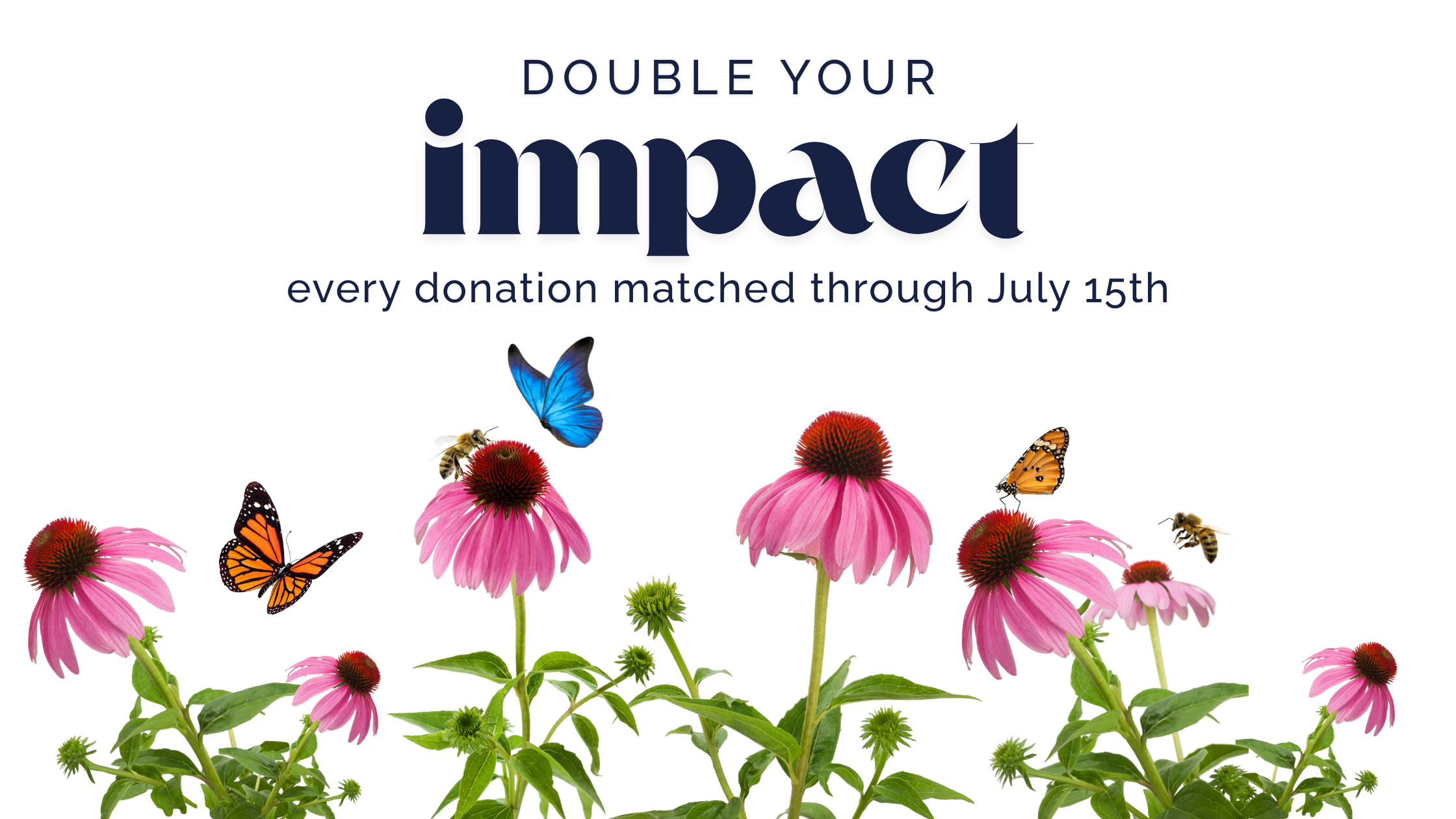A small community of neighbors in the heart of Princeton has created an ecosystem of native gardens. By learning from each other, these residents demonstrate the impact that even a small installation of native and pollinator-friendly plants can have on the environment around them. Sustainable Princeton interviewed a few of these neighbors about their practices and commitment to sustainability through community education and collaboration.
A Family Affair
Joe started the process of converting the yard from grass to native plants about ten years ago. The transition to a native yard has included the entire family. “We love getting our kids involved,” he said. In addition to helping plant the varieties of native flowers, the entire family was involved in selecting what to plant. Now their kids have the vocabulary to identify the birds that visit their plants and feeders.
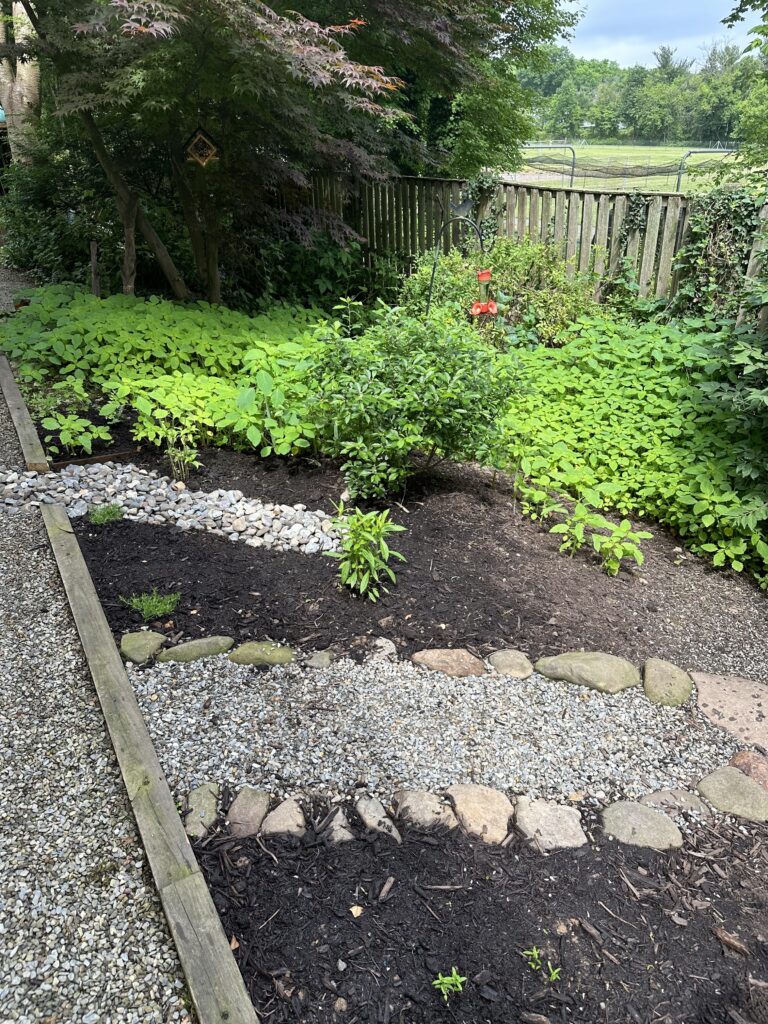
This past fall, the family dug up all the grass and poison ivy to replace with Jewelweed, which can take over but needs maintenance. Joe said, “Hummingbirds love their flowers”. Other plants and trees include Winterberry bushes, Scarlett bee balm, Coneflowers, Sumac, Buttonbush, and a RedBud tree. New native plants were purchased from the nursery at Bowman’s Hill Wildflower Preserve. Joe transplanted Milkweed and a RedBud tree from his parent’s house. Although the yard is small, there is already evidence of increased birds, butterflies, and hummingbirds.
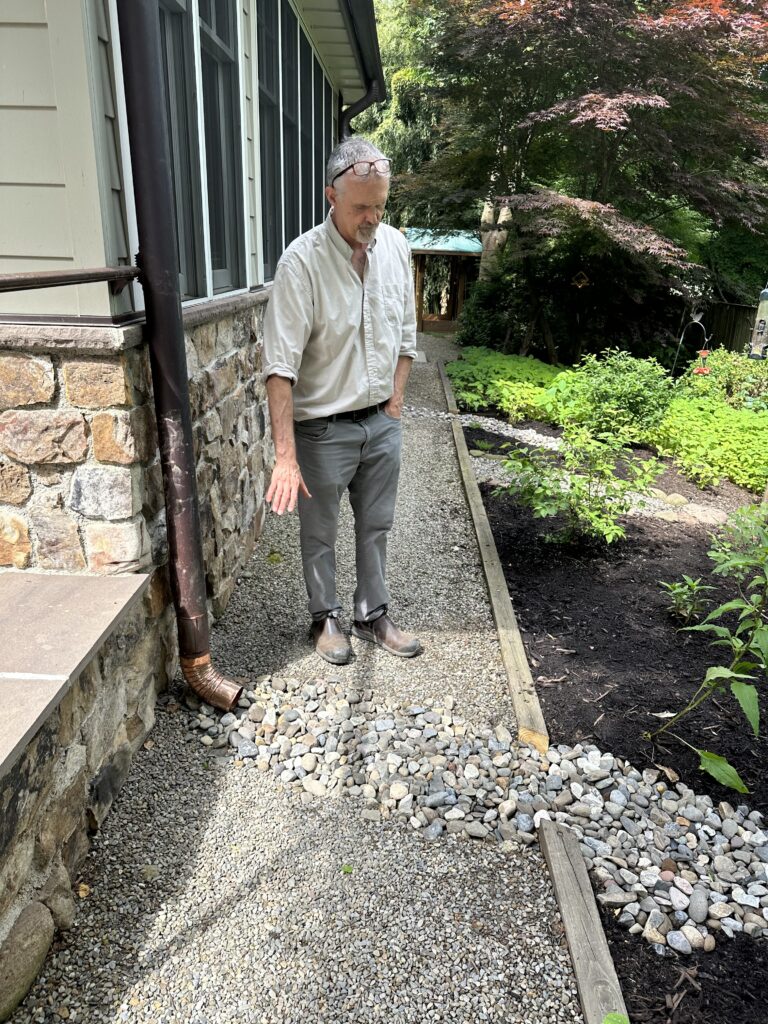
The family also covered the drain line with stones to help divert rainwater. After digging a trench, rubber roofing material was placed underneath the stones. Joe learned about this practice from their neighbor’s Jane and Dosier.
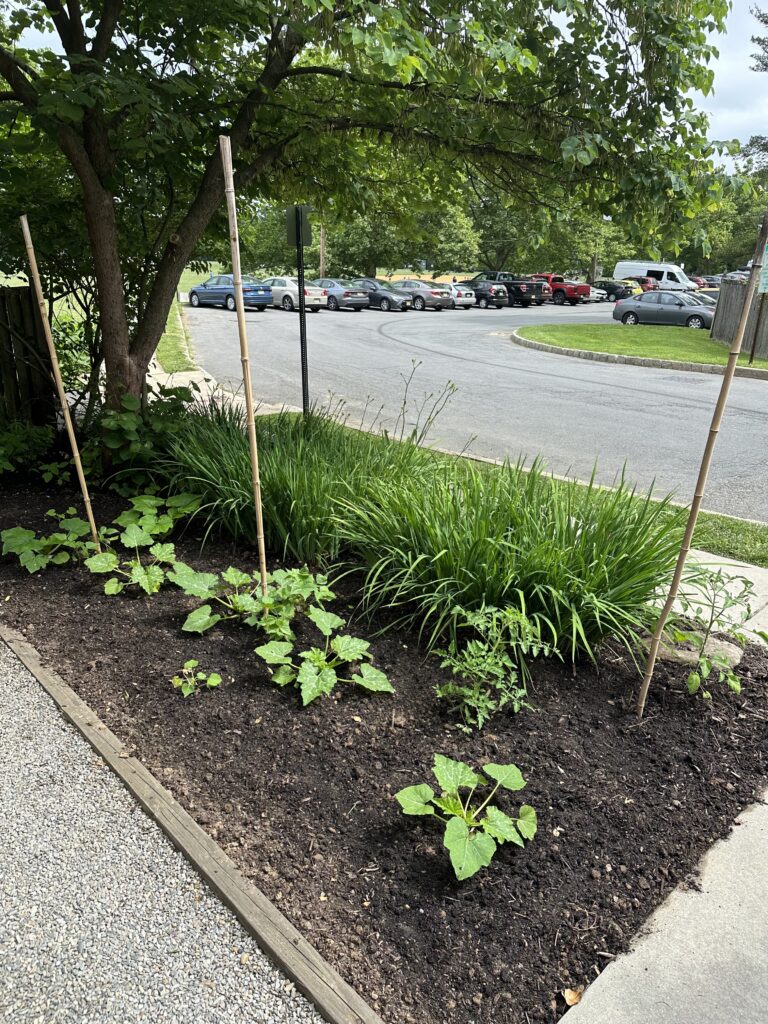
For a class project, Joe’s son wanted to grow a Milpa “Three Sisters” garden, a traditional and sustainable gardening method that includes three plants: corn, beans, and squash. Instead of corn, bamboo was used. This combination of plants work to provide balance for the soil, and in testing the soil, he found that there was a higher nitrogen level.
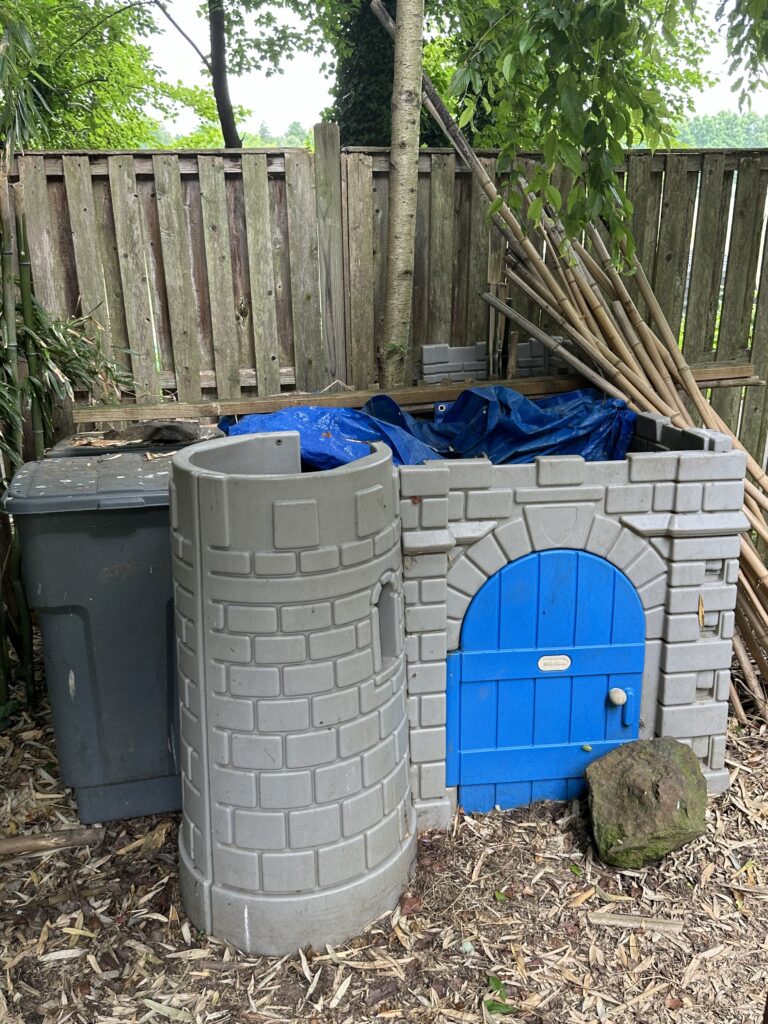
In addition to planting natives, the family also repurposed an old plastic play castle for compost, calling it a “worm castle.” The family harvests their leaves in trash bins and adds them to home compost in the “worm castle”. They used this compost for the soil for their new plantings.
When asked about their influence on others, Joe shared that he hopes his fellow neighbors also jump in. “Inertia is the most powerful force. These are small gardens but if enough people are growing them, it starts a corridor.”
30 Years of Growth
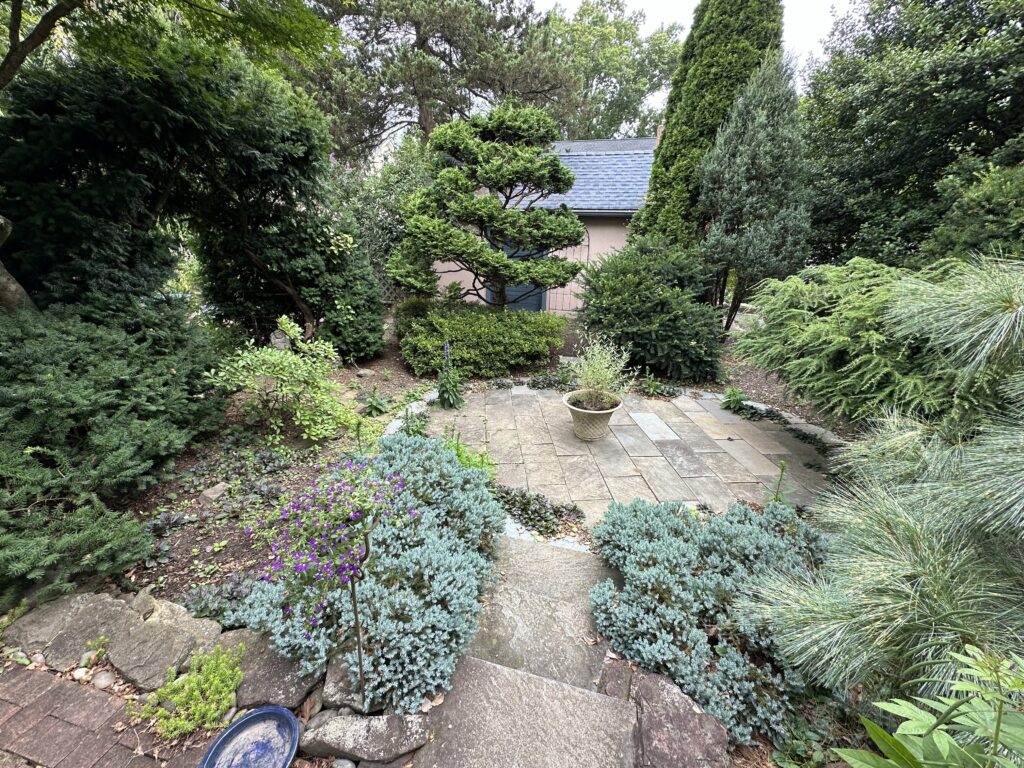
Jane arrived in Princeton, NJ in 1990 from Los Angeles, where she had her first garden. Stemming from her concern for the environment, water conservation, in particular, Jane focused on adding native plants to her new yard.
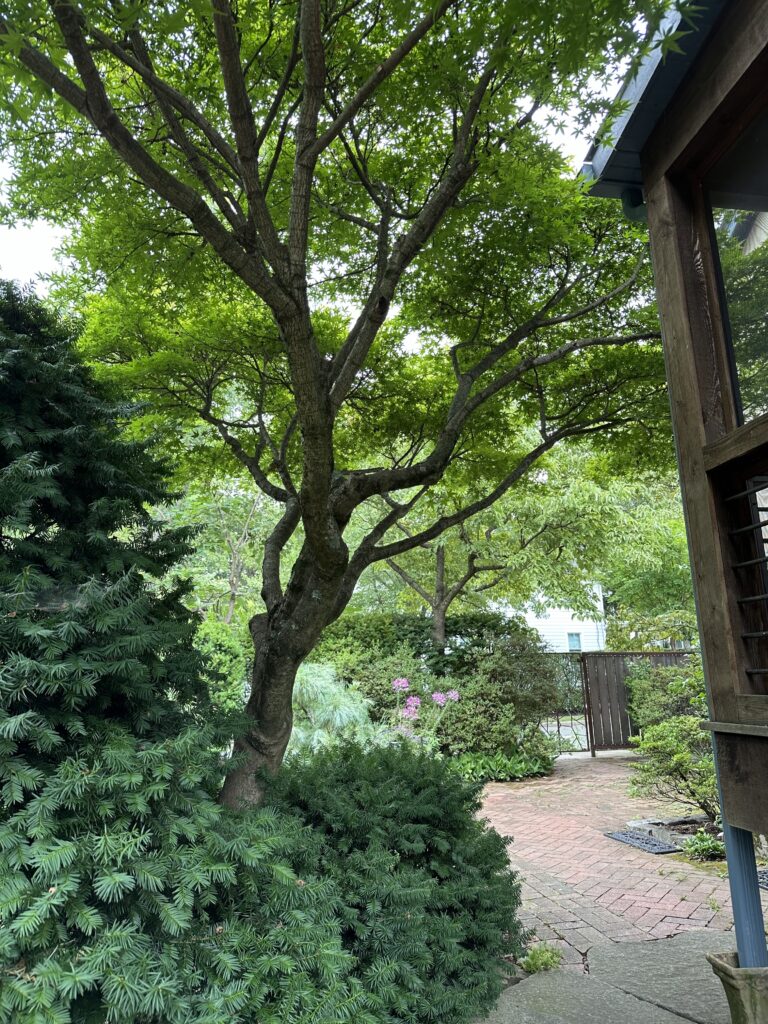
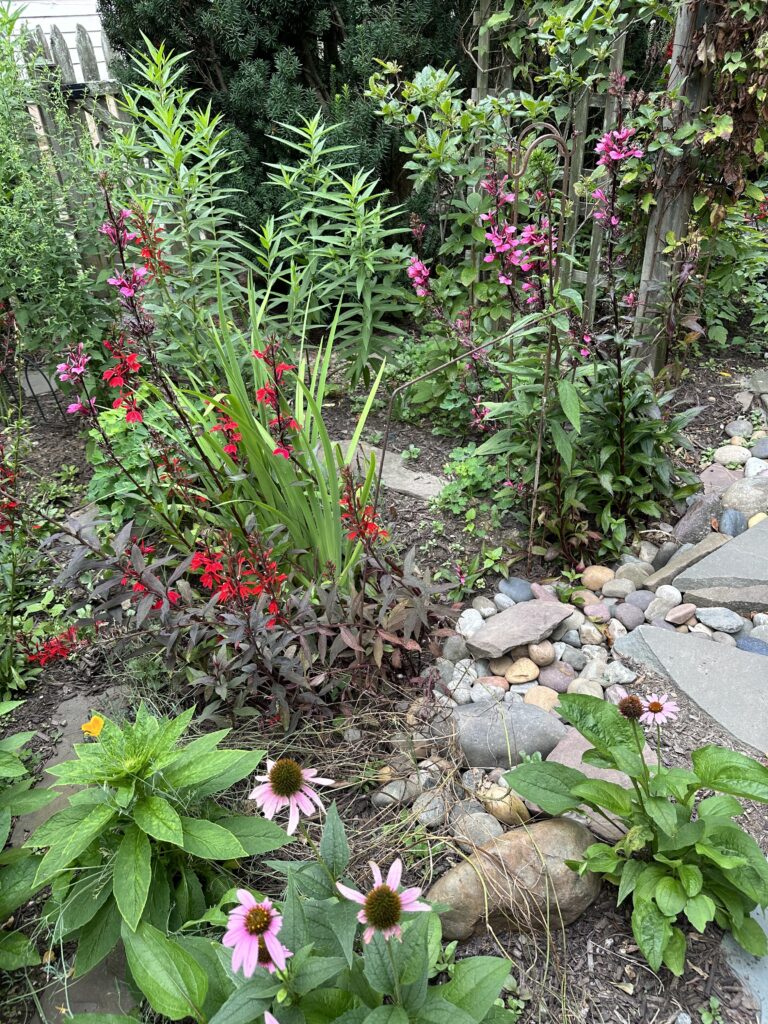
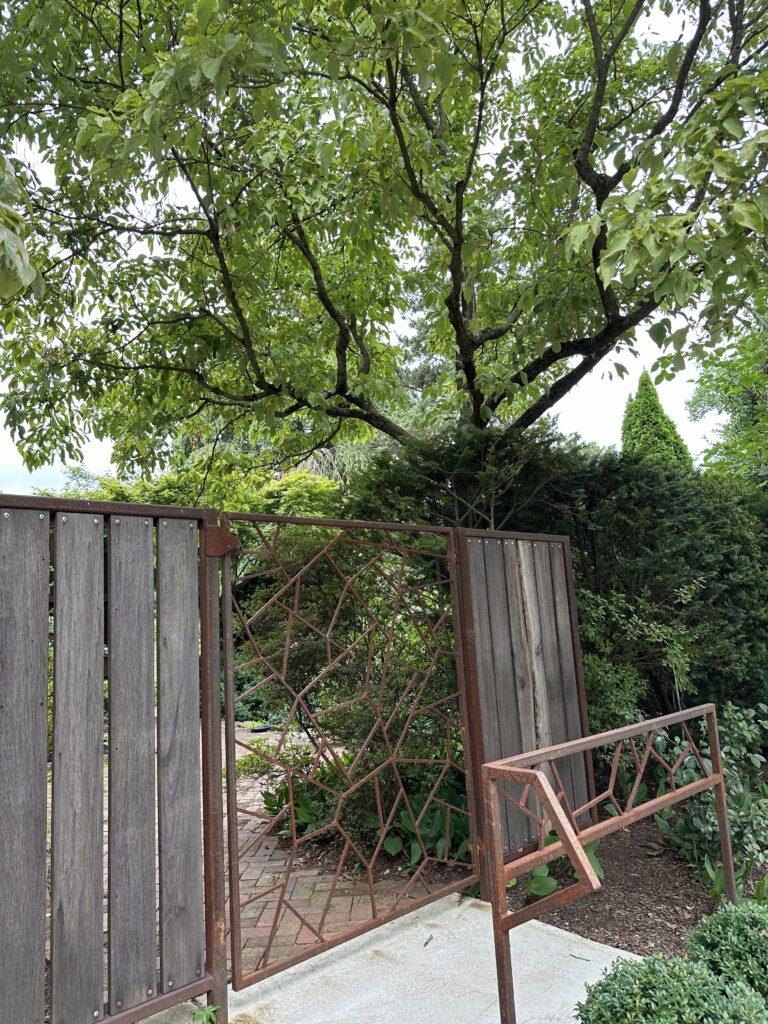
Over the years, Jane has mixed natives into her garden, replacing several invasives as well as growing plants and giving them away. Jane focuses on keeping things small since she’s limited in space. Jane purchased many smaller native plants from Bowman’s Hill Wildflower Preserve, but one of her Dogwood trees came from Rutgers Gardens and started as a stick. Several plants and trees in her yard are now over 35 years old!
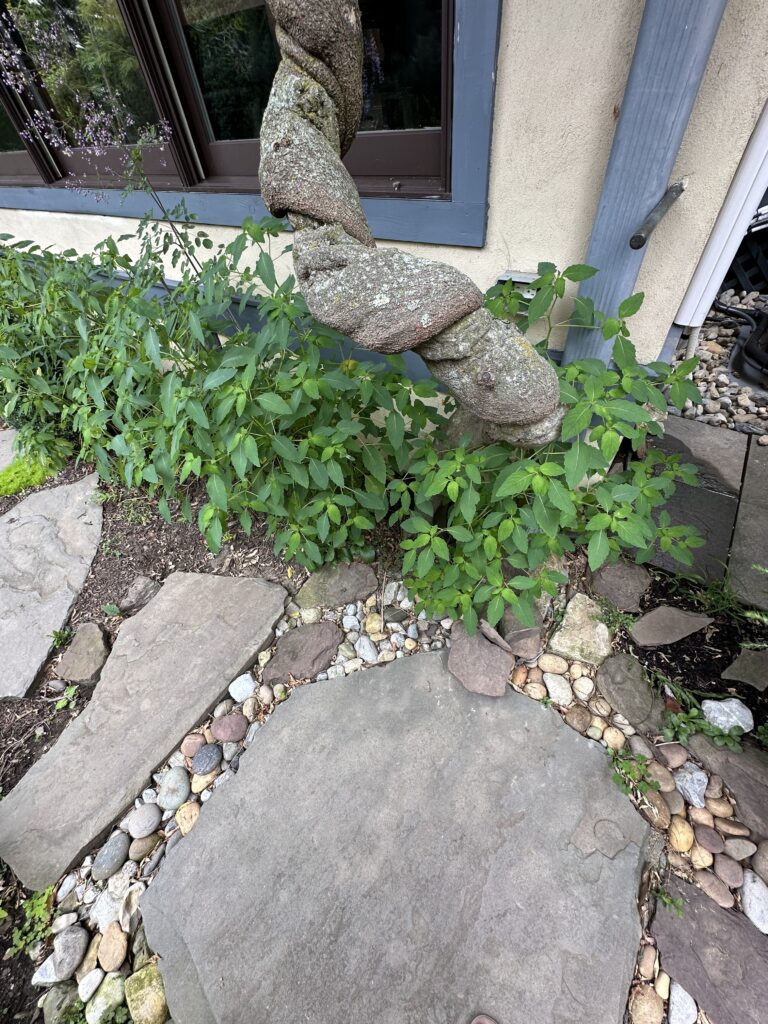
Coming from California, Jane was used to watering infrequently to save water during droughts. Working with her local landscaper, Paul Browne, she learned how to use drainage to support plants. The landscaper built a drainway for her Lobelia plants (which love water!) and she said they’ve really taken off. She was inspired to create a drain herself and shared this same practice with Joe, who replicated this in his yard as well.
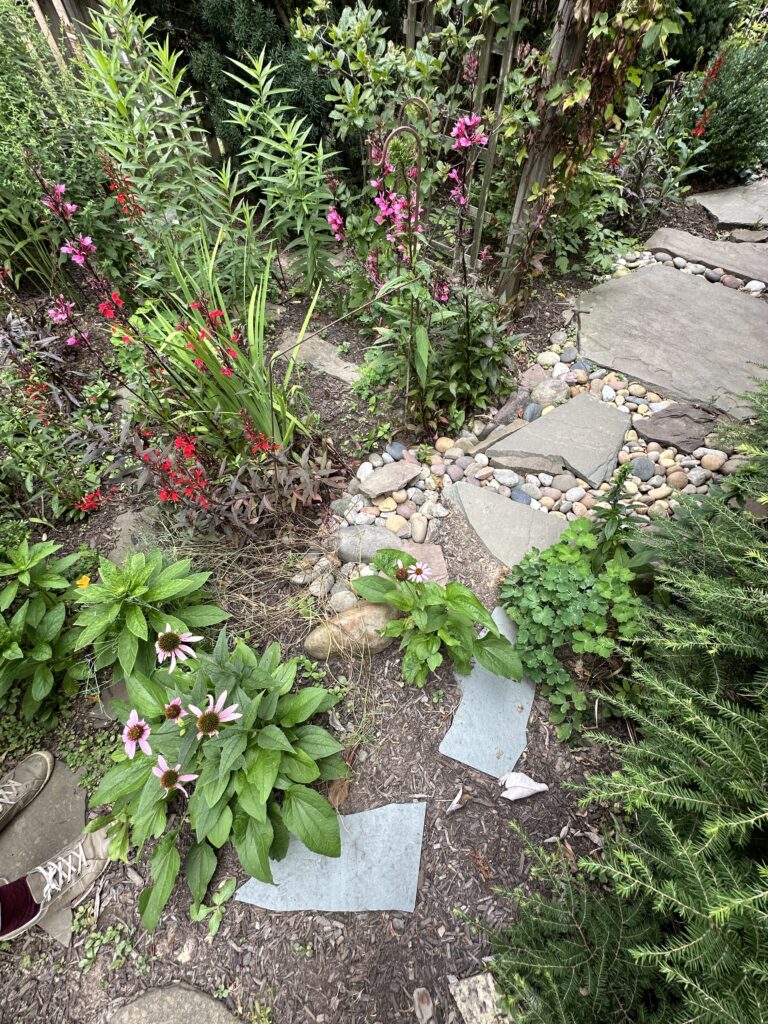
Using your gutters in direct relationship with what you’re growing in your yard is a great way to reduce water usage and help plants flourish. You can set up a hose and let your water flow efficiently. Jane is still adjusting her pathways, but it’s remarkable to see how much the plants have grown from seed in just the past year. The Lobelias are some of Jane’s favorite plants because they are perfect for pollinators like hummingbirds and butterflies.
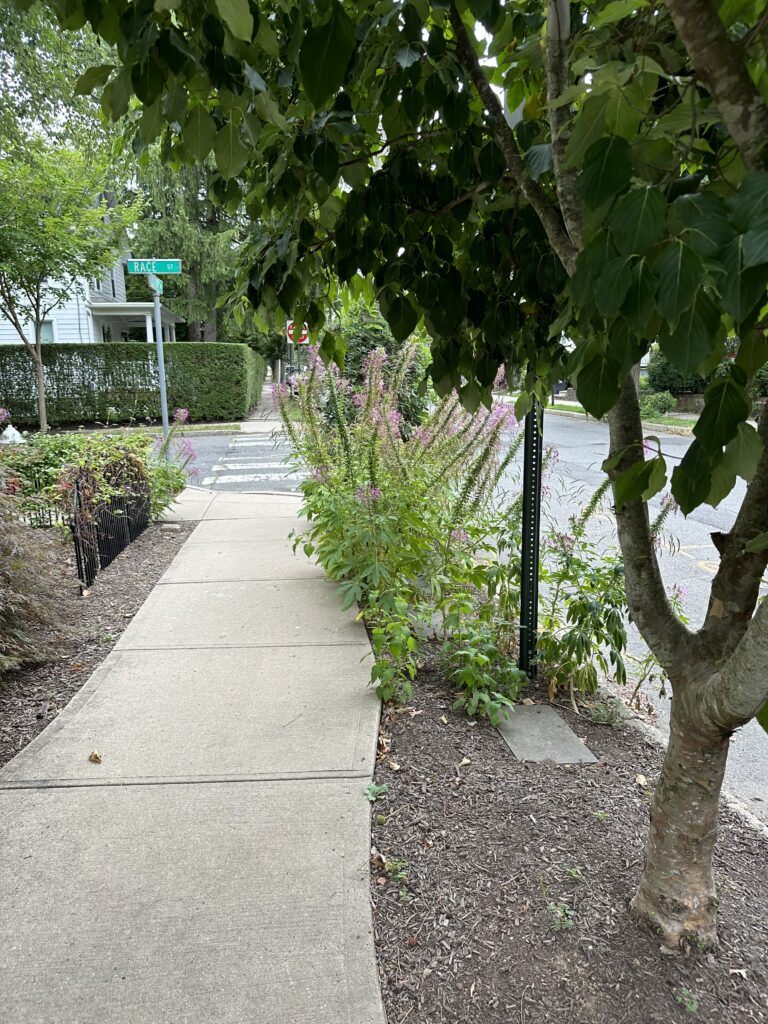
Privet, an invasive shrub/hedge, surrounded the property originally and while there are still a few left at the front — the rest had to be dug up by the roots. Additionally, the grass along the curb has been gone for over 20 years now. Jane said she put down thick newspaper and dirt over the top of it, covered it with seeds, and left it alone. This is a great technique for removing large patches of invasives or grass. While many neighbors still have largely grass lawns, it’s inspiring to see so many starting to transition their yards to native plants, even a little at a time.
Small but Mighty
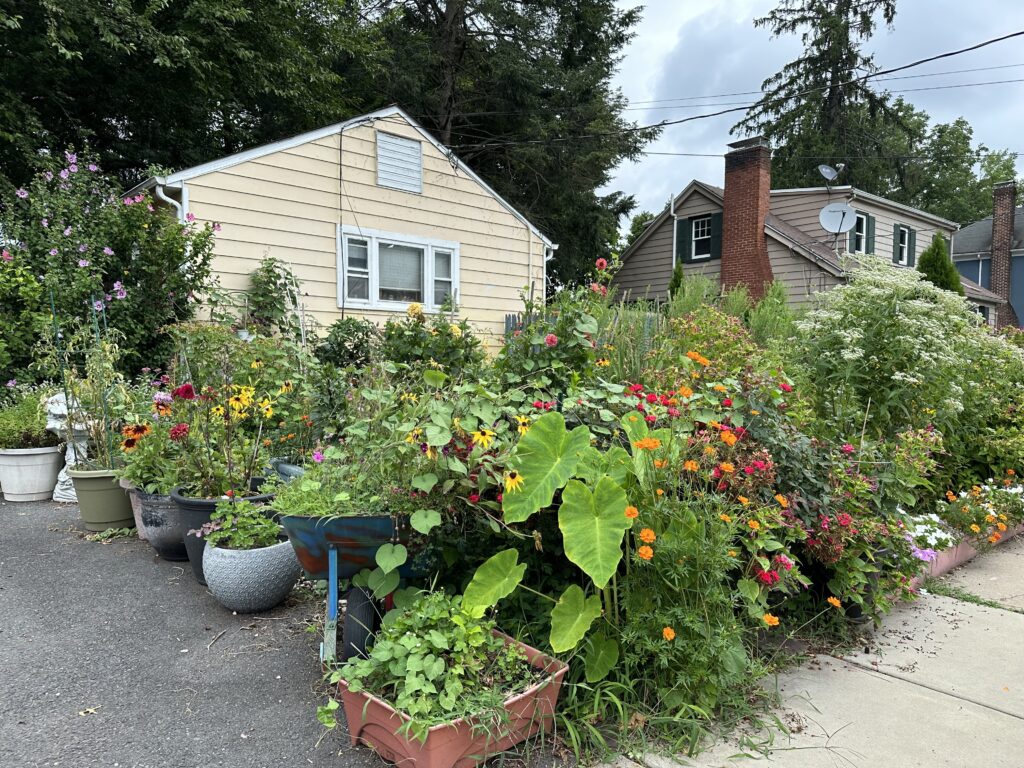
One street over, Matt and Shannon have converted their entire front yard from grass to native or pollinator-friendly plants. This transition started when Matt ripped out the whole front lawn. Together, Matt and Shannon added planters, and kept adding more each year. They pair flowers and vegetables together, called companion planting, to further enhance the growth and reduce pests or diseases. This also helps maximize their space for planting. Matt and Shannon follow other sustainable landscaping practices such as leaving their plants in fall and winter to give pollinators a habitat and using no pesticides.
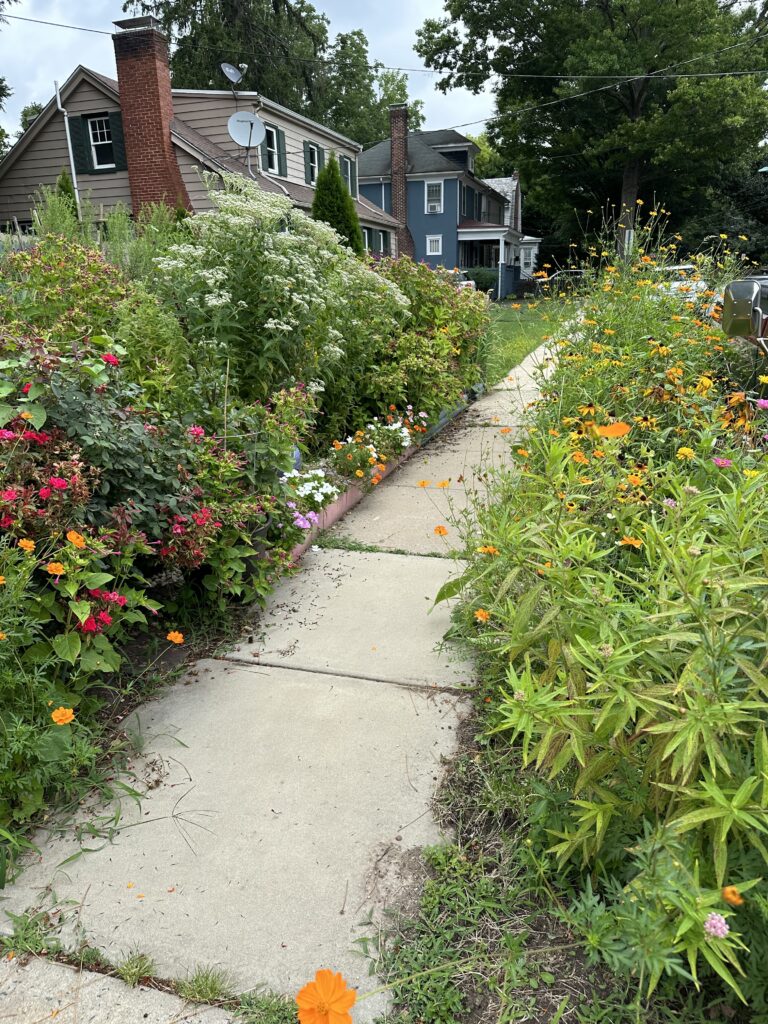
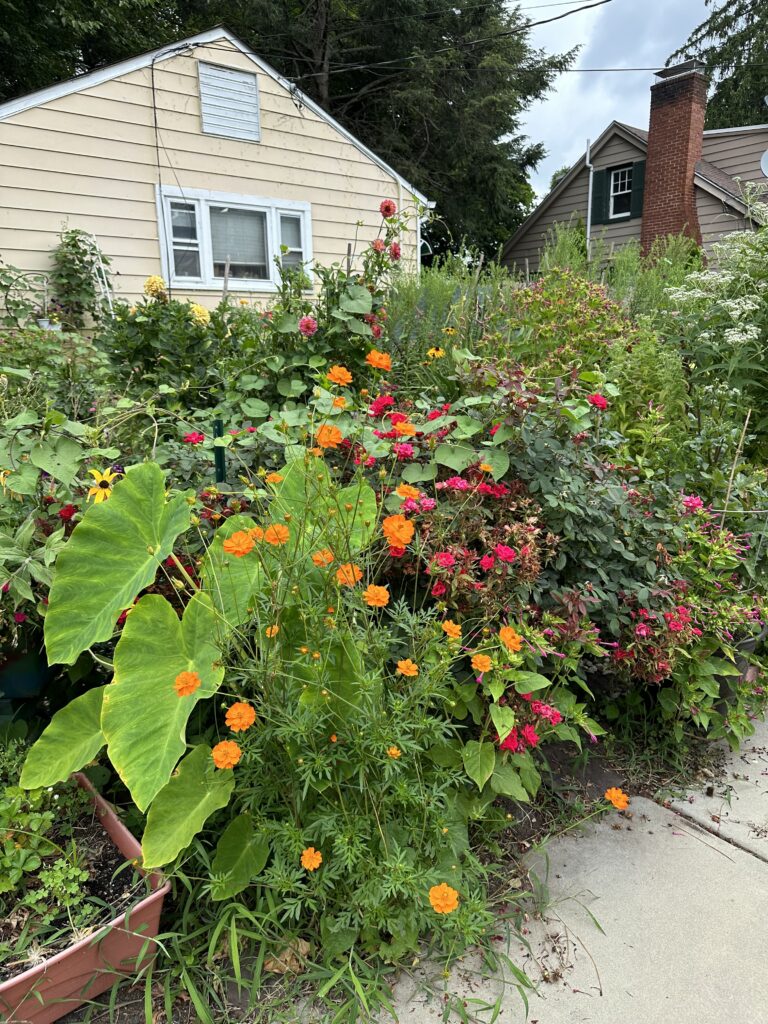
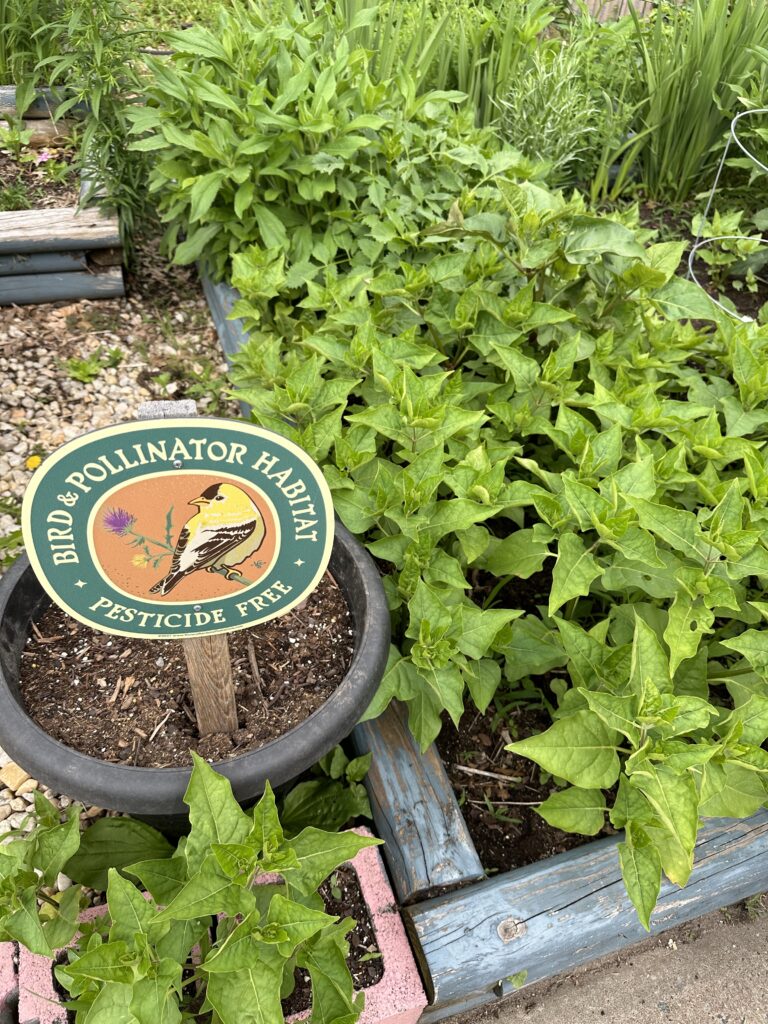
The prominent location of their garden to the sidewalk and brightly colored repurposed tires and painted flower beds are inviting to passersby and neighbors. Shannon said, “People will come by and ask about our garden”. She also teaches native species classes at the Mountain Lakes nature preserve and forages for plants.
Shannon shared, “Being able to have a pesticide-free habitat for the insects, birds, and other animals, reuse items in our yard to reduce waste, establish this native corridor, teaching these foraging classes with Matt, growing our own food, and composting our brush/leaves and food waste all to reduce our carbon footprint and truly live by our values and morals, means the world to us! It brings us a sense of fulfillment and is our spirituality. It is a pleasure and an honor to share it with others and hopefully inspire more to do the same!!”
Joe shared that he learns a lot about sustainable gardening from neighbors like Matt and Shannon. “When you live in a community where people talk about these things, it’s hard not to be moved by what other people are doing,” he said. “We continue to inspire each other”.
Do you incorporate sustainable landscaping practices into your garden? Large or small we’d love to feature you! Reach out to us at info@sustainableprinceton.org




